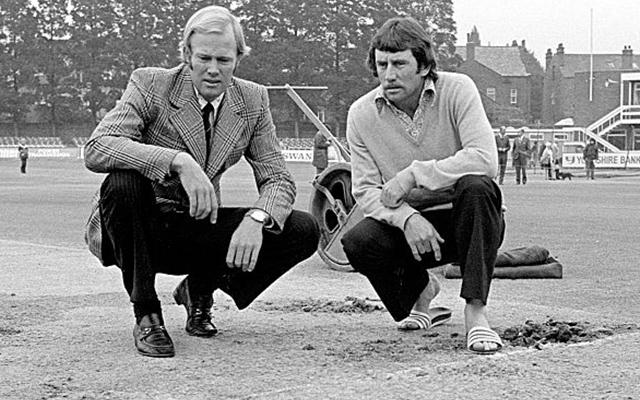August 19, 1975 – When a Test match pitch in England was vandalized in support of a prisoner
The night watchman at the venue claimed to have not heard any noises.
2 Min Read


Australia began their defence of the Ashes trophy in 1975 with an innings win in the 4-match Test series as the hosts aggregated only 274 runs in the first Test match in Birmingham, England. The 2nd Test match at Lord’s ended in a draw with the Aussies managing 329/3 in pursuit of a 484-run target. The series moved to Leeds where the hosts elected to bat first and made a steady progression on the opening day.
Fifties from David Steele (73), John Edrich (62) and the captain Tony Greig (51) helped England finish the first day at 251/5. But an early morning burst from Gary Gilmour restricted the hosts to only 288 as the left-arm pacer took a 6-wicket haul. England bounced back strongly to bowl Australia out for just 134 with the help of Phil Edmonds’ 5-wicket haul. Steele’s 92 and Greig’s 49 played a crucial part in England’s total of 291 in the 2nd innings.
The hosts had a chance to level the series as they set a huge 445-run target in front of the Aussies. But the touring side won’t let the game slip into England’s hands. Opener Rick McCosker made an unbeaten 95 while their skipper Ian Chappell scored 62 as the Australians ended the 4th day on 220/3. The game was set for an exciting finish as the hosts needed seven wickets to level the series while Australia required 223 runs to seal the series.
A spoiled pitch:
The groundsman George Cawthray uncovered the pitch on the final day morning only to find lumps of soil out at the centre of the pitch. Cawthray could have made adjustments to the pitch had the vandalizer(s) not fill the holes they dug in the pitch with oil. The captains of both the team arrived at the venue to look at the pitch. They agreed to not continue play and also turned down the idea of resuming on an adjacent track.
The night watchman at the venue claimed to have not heard any noises and soon took the help of the police to find the culprits. Soon, the walls of the Headingley started to reverberate with chants of “George Davis Is Innocent”. It was understood that the protestors who were supporting George Davis had spoiled the track of the Test match. McCosker remained unbeaten 95; five runs short of his maiden Test hundred.
Who is George Davis?

The nuisance was caused by his supporters seeking freedom after Davis was sentensed a 20-year prison for the charges laid on him in March 1975. He was convicted for an armed payroll robbery at the London Electricity Board (LEB) offices in Ilford, Essex, on 4 April 1974. Davis, a London minicab driver, was considered to be innocent by many and a campaign named “George Davis Is Innocent” was initiated in his support.
He was released in 1976 when Roy Jenkins, the home secretary, decided that his conviction was based on improper evidence. Davis returned to jail in 1978 when it was proved that he was involved in another armed bank raid on September 23rd in 1977. He had fired raid shots and hurt a security guard during the robbery. George returned from prison in 1984 but was in it once again sent back in, in 1987 when he attempted to steal mailbags.
For all the latest cricket news and other updates follow CricTracker.
Download Our App